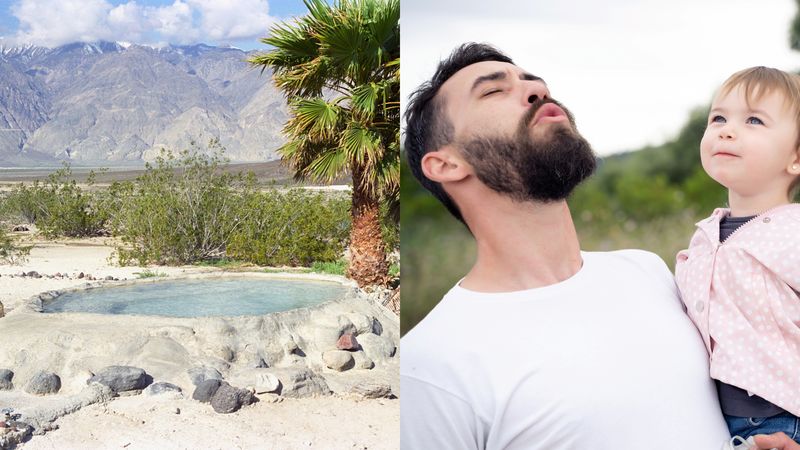There are plenty of rules in US National Parks that are to be expected: don’t vandalize, don’t stray off permitted paths (we're looking at you, Pierce Brosnan), and please, please don’t touch the wildlife. It turns out though, that there are a whole bunch of other regulations that are super specific – although still very much sensible.
No hot spring water births
Are national parks the hot new destination for a water birth? No, at least not in Death Valley. Popping out new life in a place with “death” in its name might sound kind of badass, but giving birth in the waters of this national park’s Saline Valley Warm Springs is strictly prohibited.
The reason for this rule, according to the National Park Service, is “to protect the habitat of aquatic species or sensitive species and to provide for public health and safety.” It’s the same justification for why you can’t pee in the springs either, or go in if you’ve got an infectious disease.
Don’t tease wildlife
Fun fact: teasing the wildlife residents in national parks is actually banned when they're nesting, breeding, or going about other activities. Of course, we don’t mean pointing and laughing at a deer because it’s got some foliage stuck in its antlers, but rather trying to play peekaboo with a bear or taunting an animal with food (giving them food is also prohibited) is against the rules.
Besides being illegal, it’s just a straight-up bad idea. Wild animals are unpredictable at the best of times – particularly when they’re mating or have young in tow – and they’ll soon let you know when you’ve crossed the line.
That’s exactly what happened to two men featured on the Instagram account TouronsOfYellowstone, who were filmed near the border of Yellowstone National Park in April 2023 appearing to taunt and attempt to poke a moose. They promptly appeared to receive a dose of instant karma when the moose had enough and started chasing after them, causing one of them to slip in the snow.
No animal keepsakes – dead or alive
It’s sensible to assume that it’s forbidden to steal a live animal from a national park, but if you stumble across a pretty bird feather or an empty eggshell, don’t pick that up either – you could land yourself in trouble.
With the exception of licenses and permits given out to Indigenous Peoples for religious purposes (or to scientists for research), taking any animal or plant, part of one, or something they produce – like frogspawn or a bird’s nest, for example – is banned.
It’s deemed so with the goal of protecting the parks’ natural resources, which is part of what makes them so enjoyable to visit in the first place.
Zip it with the wolf impressions
Visitors to Yellowstone National Park are well known for flouting the rules when it comes to its iconic hot springs, but they can also find themselves in metaphorical hot water by trying to impress their pals with some animal impressions.
Specifically, imitating both wolf howls and elk calls on park grounds is prohibited. It might seem like just a bit of fun, but there’s a chance that it could cause distress or alter their behavior, let alone attract an animal – and all 318 kilograms (700 pounds) of a pissed-off elk and its antlers is the last thing you want coming anywhere near you.





